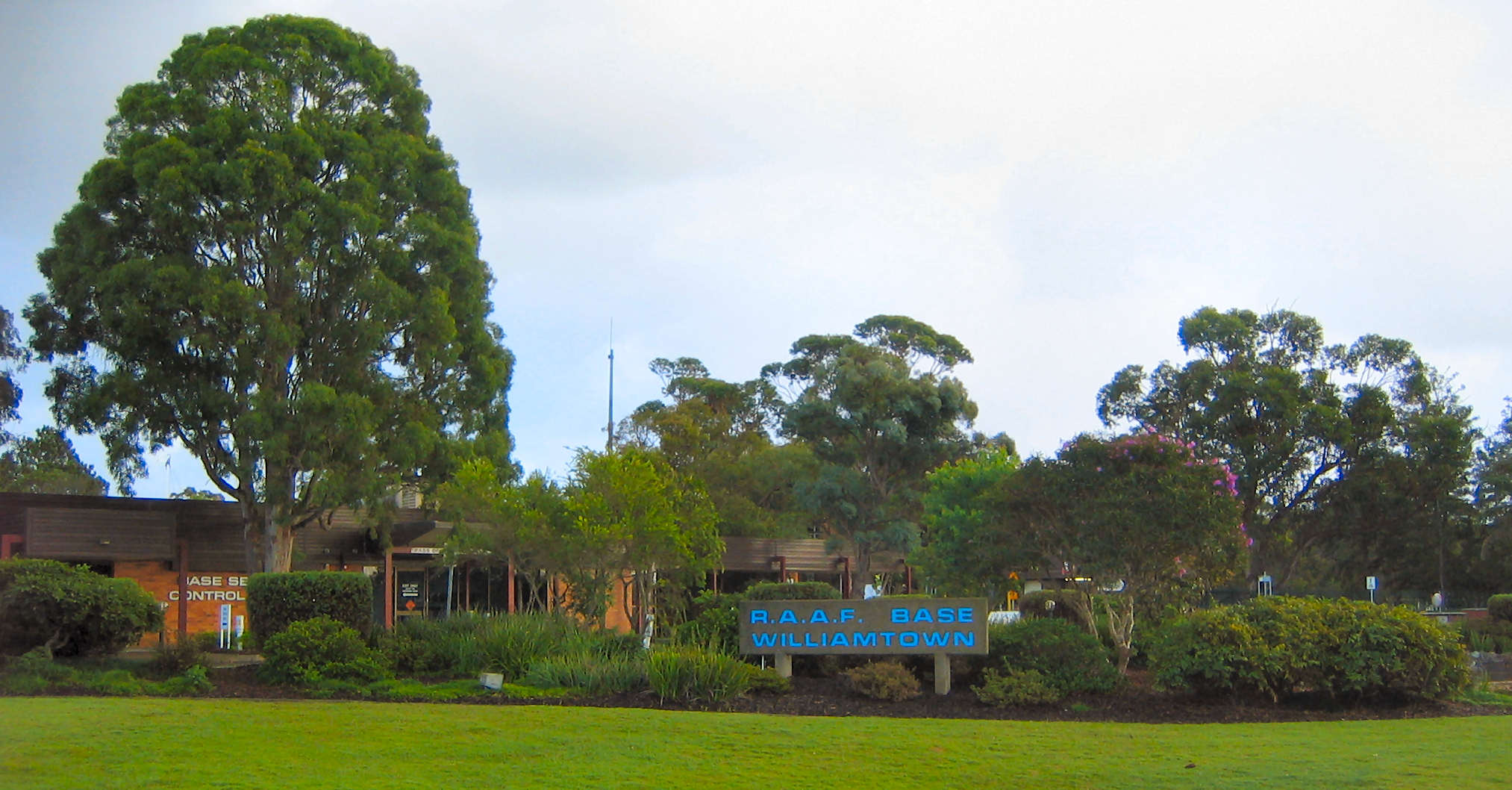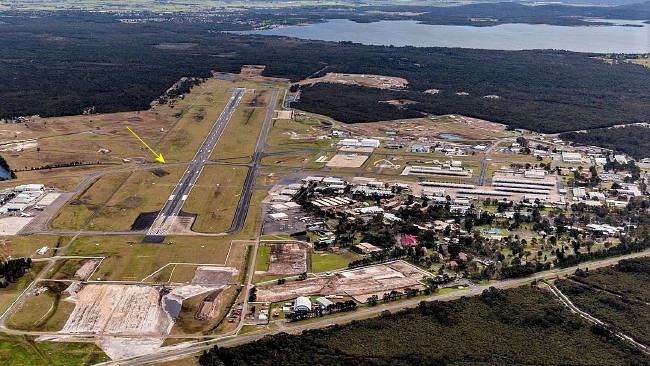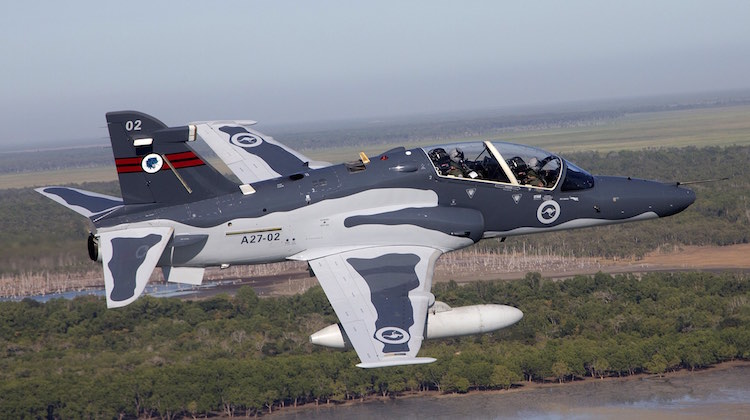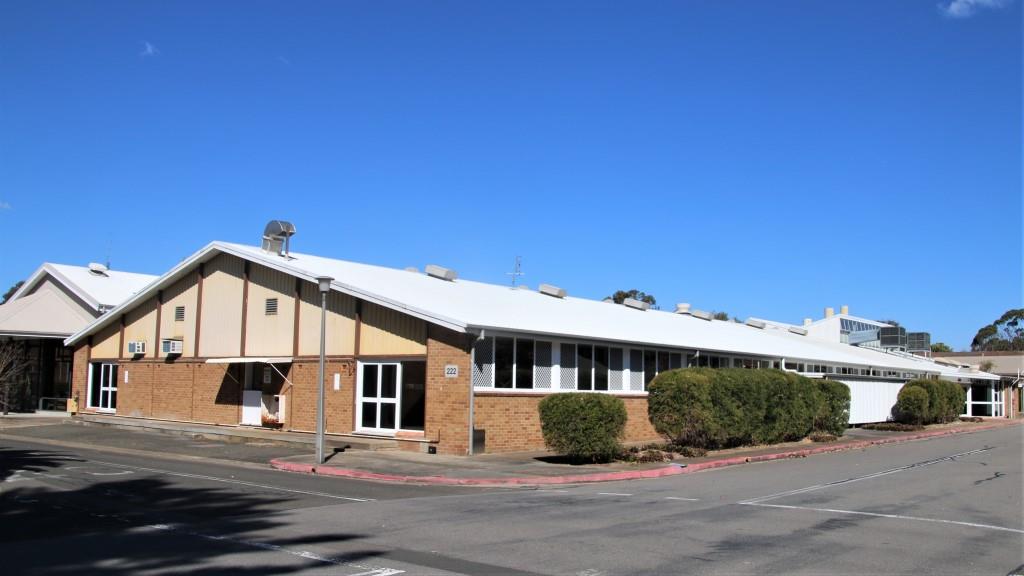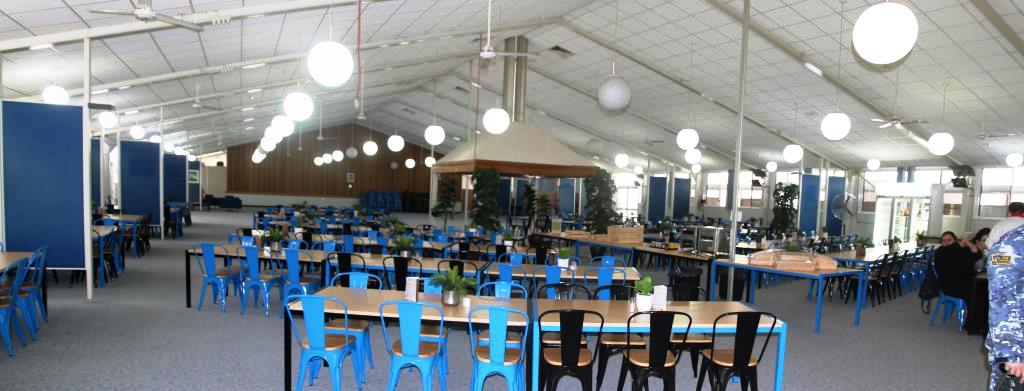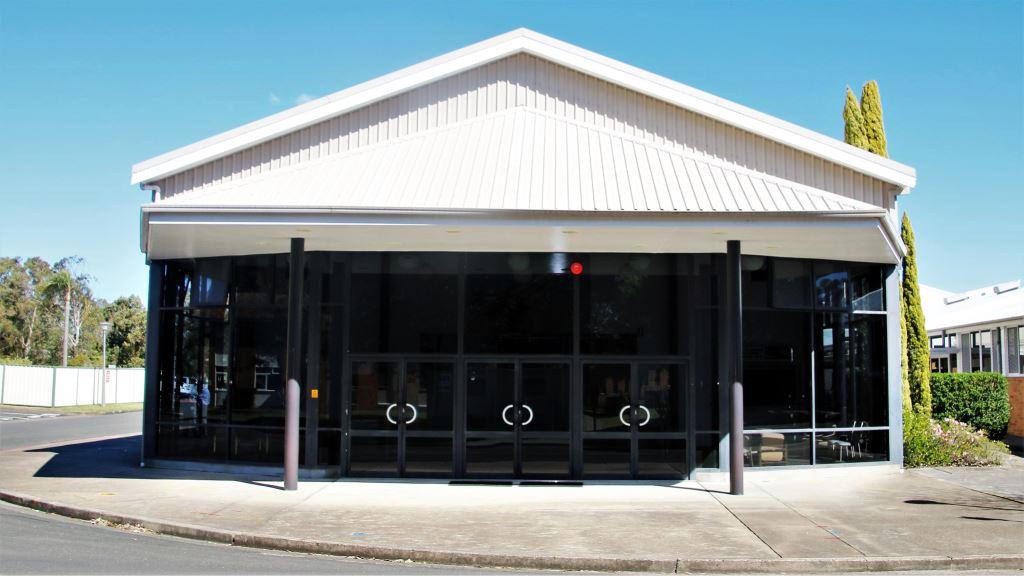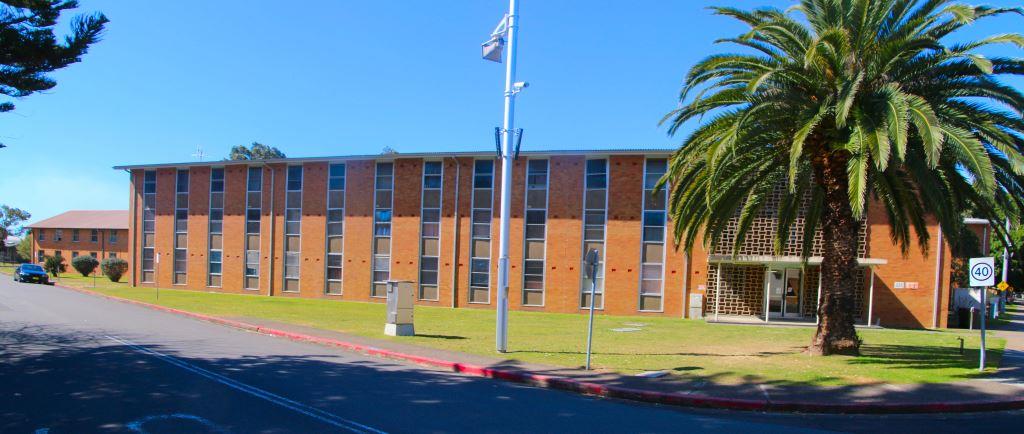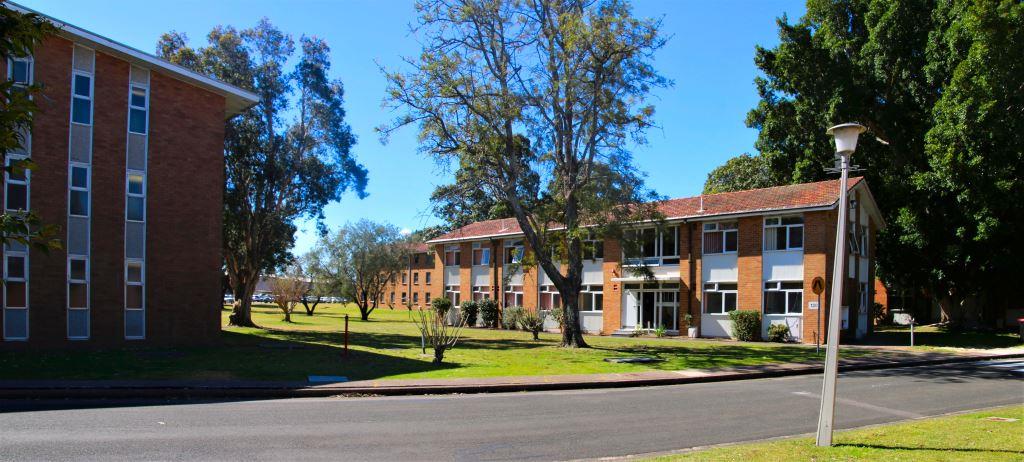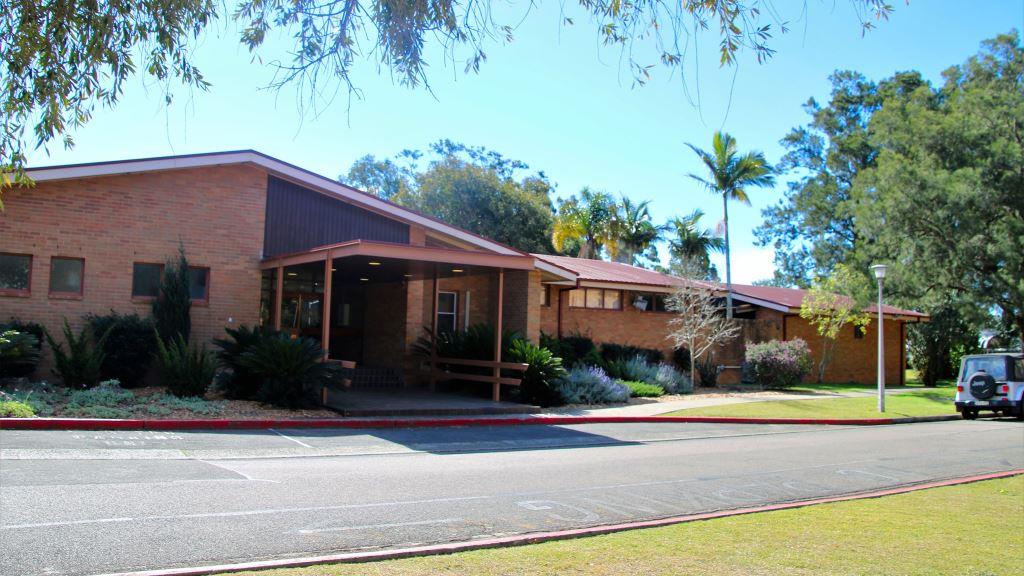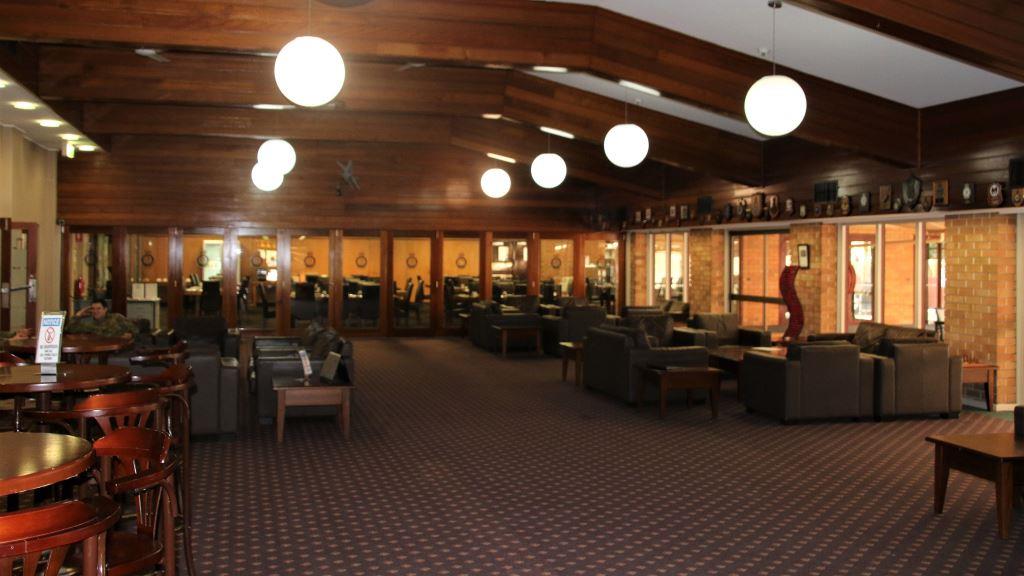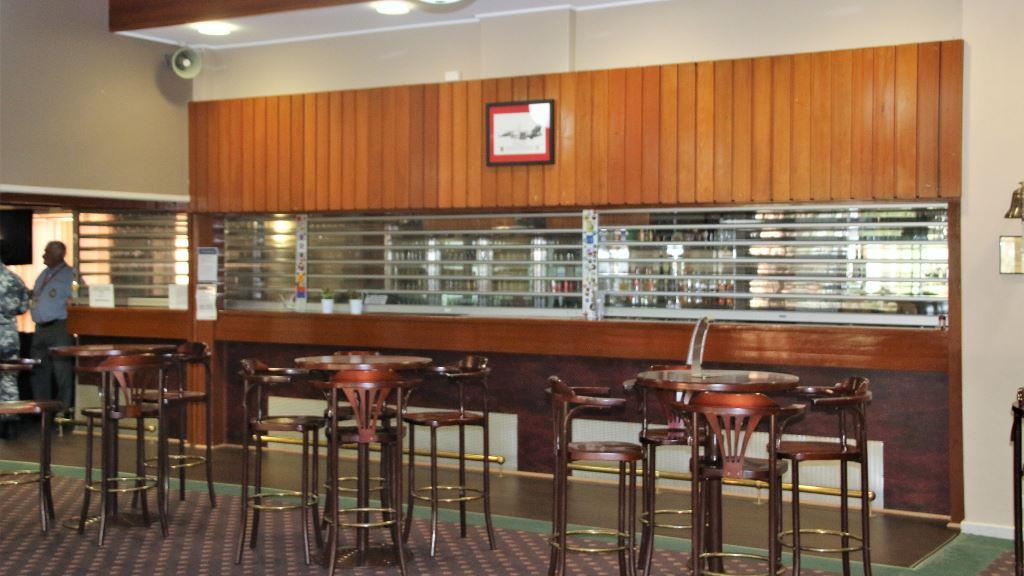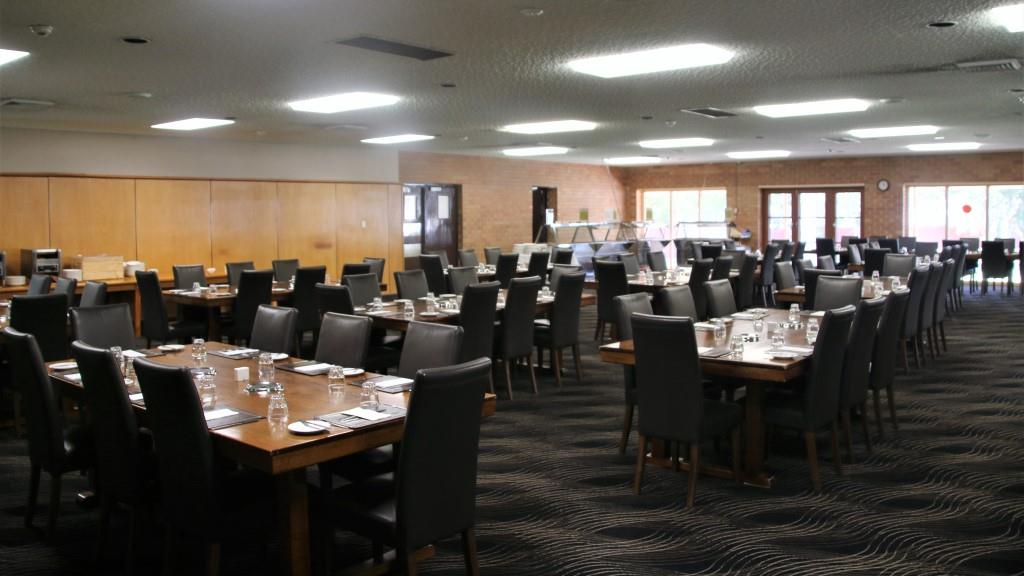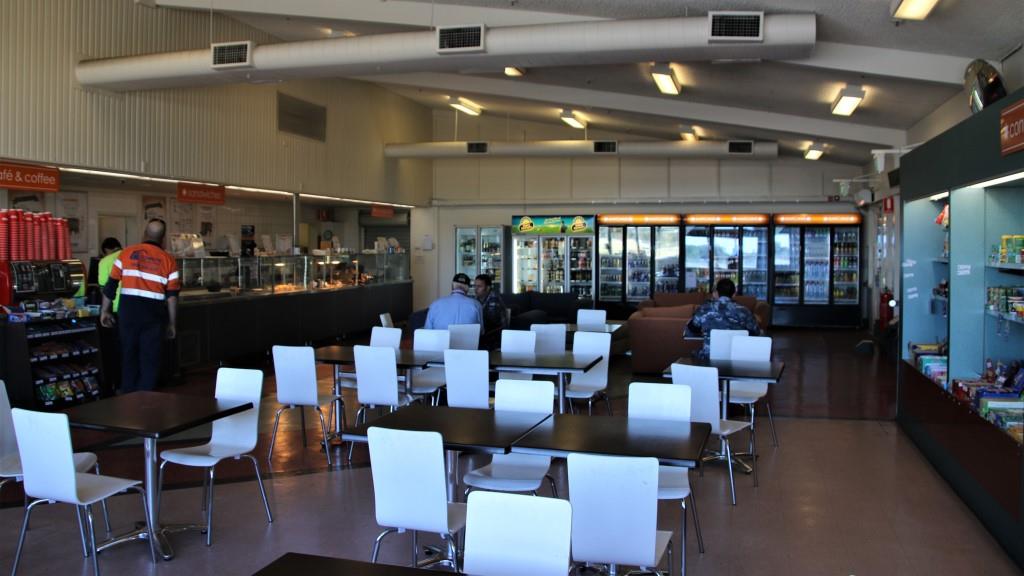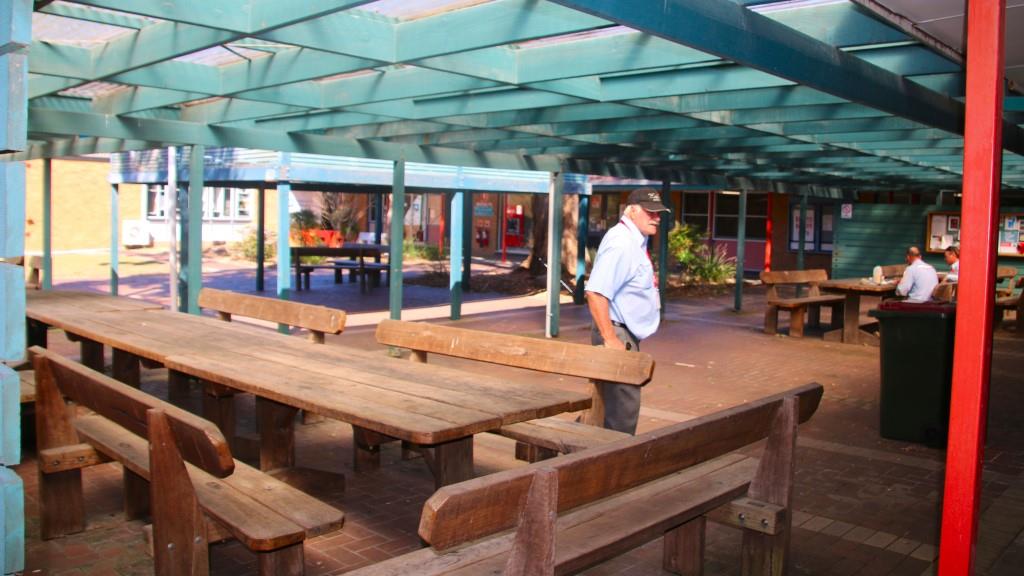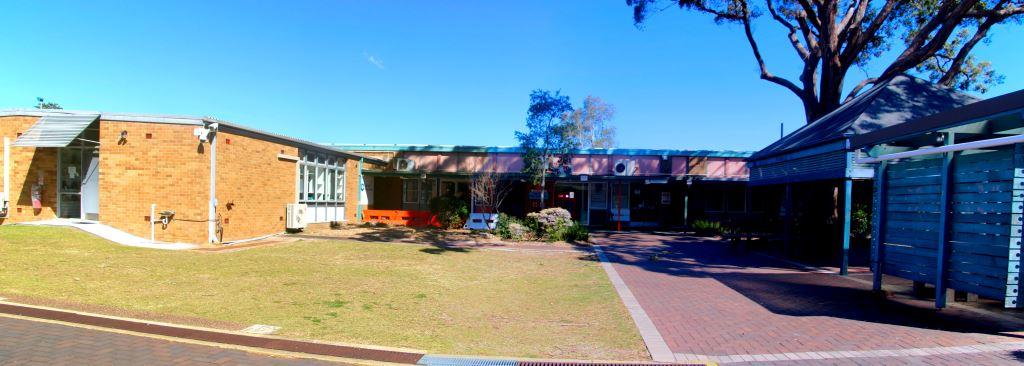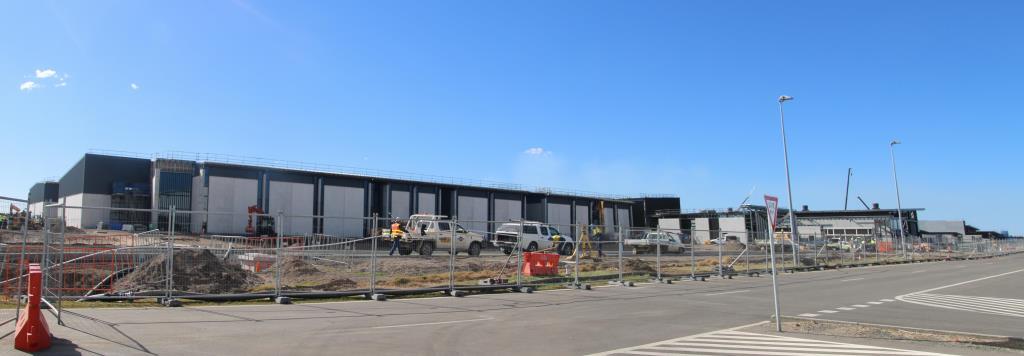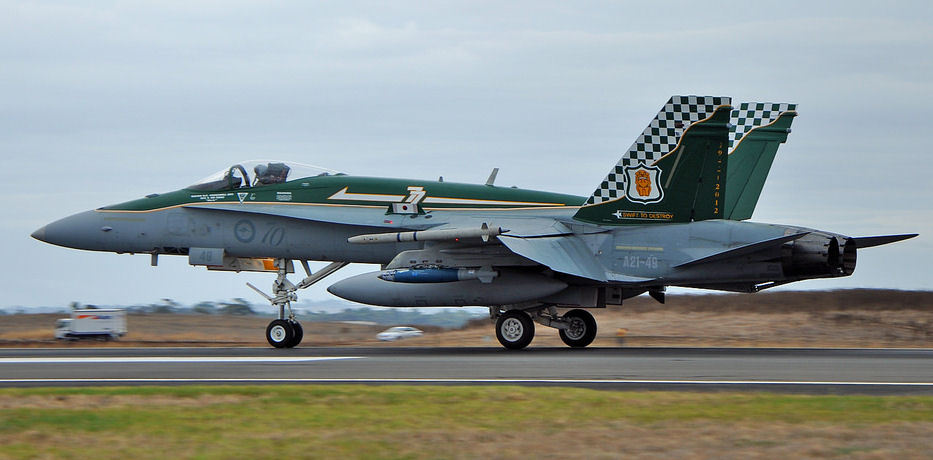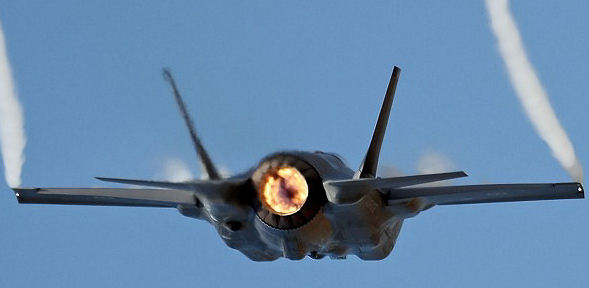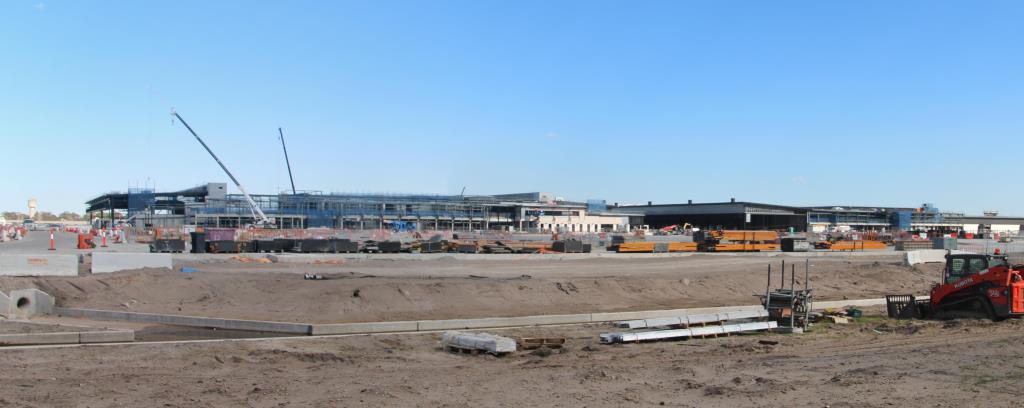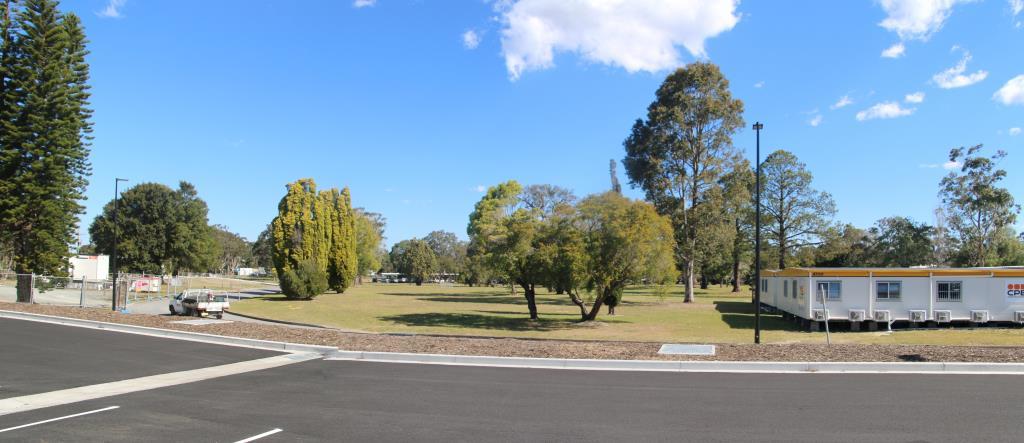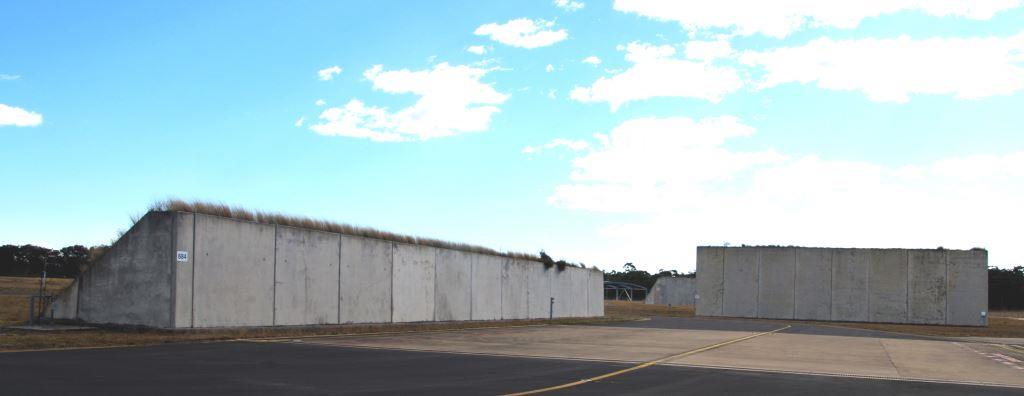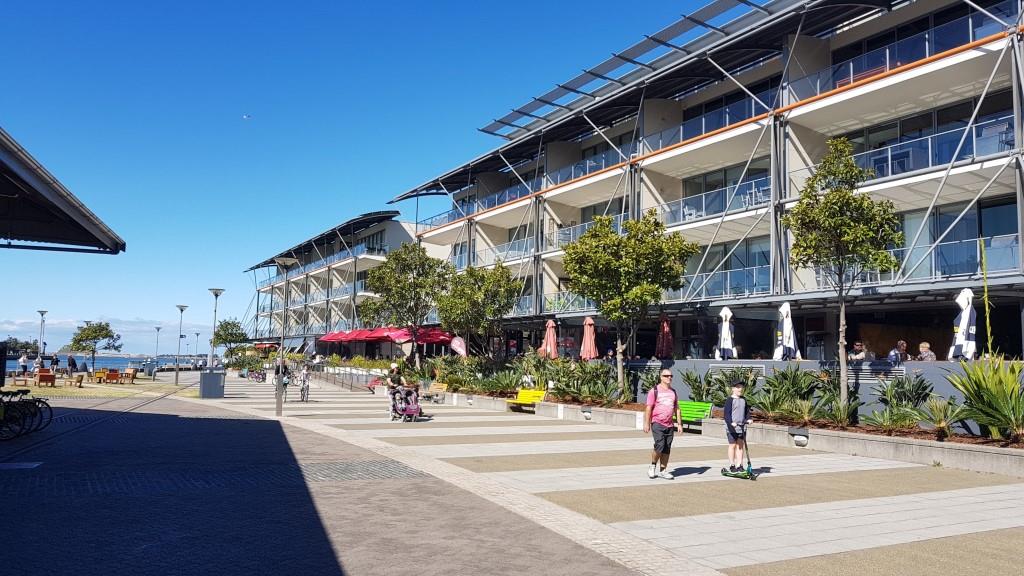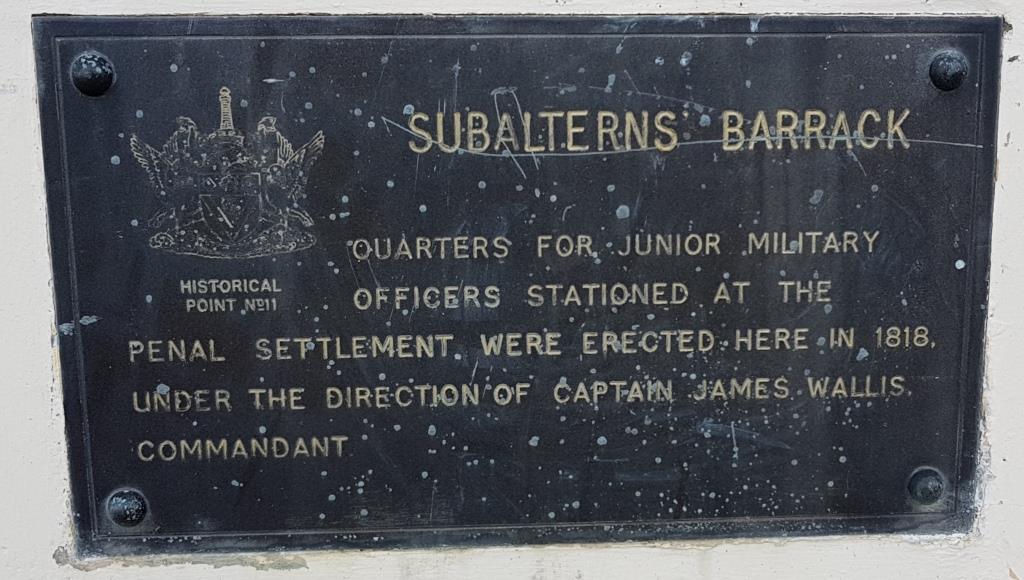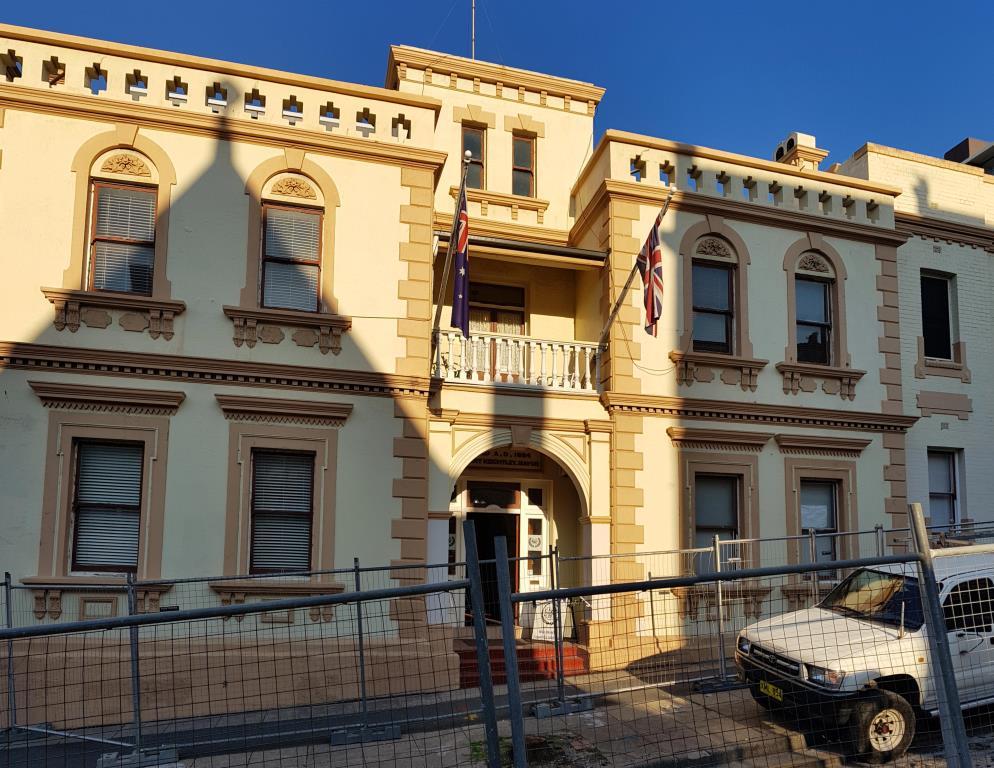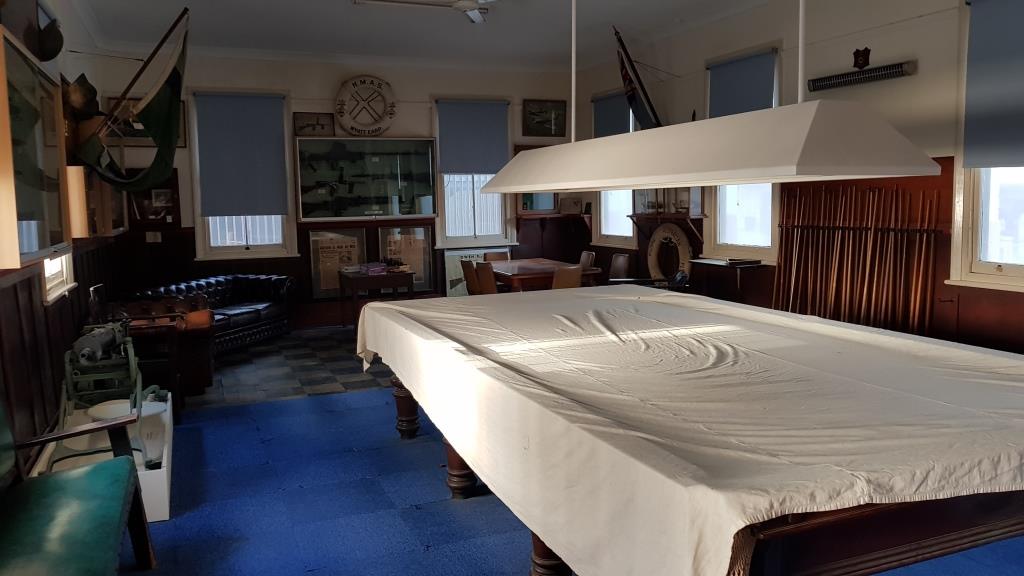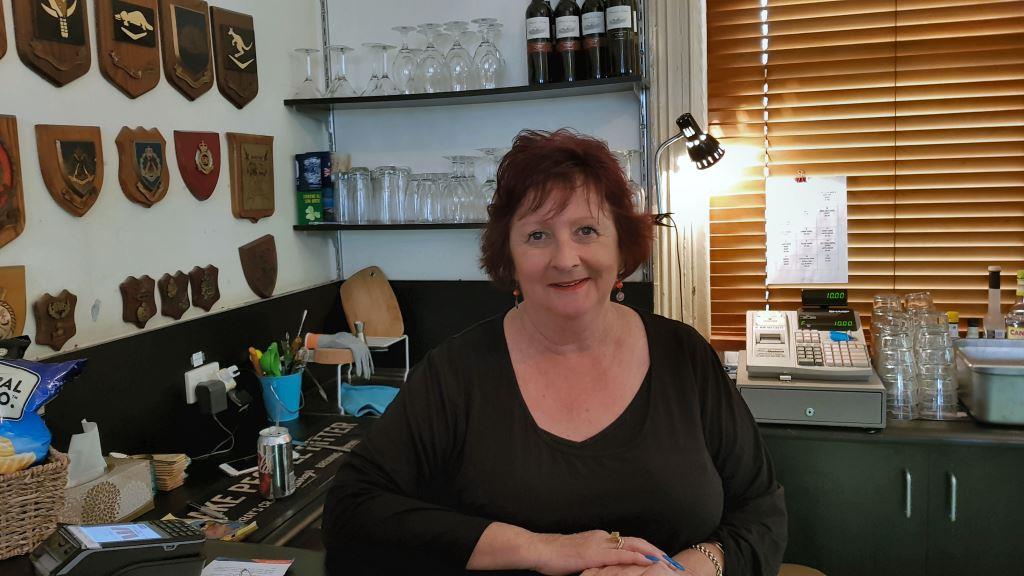|
|
|||||||||||||||||||||||||||||||||||||||||||||||||
|
|||||||||||||||||||||||||||||||||||||||||||||||||
|
Privacy Policy | Editorial Policy | Profit Policy | Join the Association | List of Members | Contact us | Index | Links |
|||||||||||||||||||||||||||||||||||||||||||||||||
|
Back Go to page: 1 2 3 4 5 6 7 8 9 10 11 12 13 14 15 16 17 18 19 20 Forward
|
|||||||||||||||||||||||||||||||||||||||||||||||||
|
|
|||||||||||||||||||||||||||||||||||||||||||||||||
|
Williamtown Revisited.
(You can click some of these pics to get a better view)
THE RAAF is investing huge sums of money as it spends $1.5 billion to upgrade its premier fighter base.
Taxpayers are devoting more than $25 billion to modernise the air force and at the sharp end of that outlay will be $12 billion or so for 72 (with an option of another 28) “fifth generation” stealth Joint Strike Fighters – the F-35 Lightning II. Fifty-six of the aircraft will eventually be based at Williamtown with the first two set to arrive in December 2018. The rest will be based at RAAF Tindal, near Darwin. If the option is taken up, a further 28 aircraft could be based at Amberley.
|
|||||||||||||||||||||||||||||||||||||||||||||||||
|
|
|||||||||||||||||||||||||||||||||||||||||||||||||
|
150 of the new fighters are already operational in the US with both the Marine Corps and US Air Force operating them. Hopefully they will have sorted out all the bugs by the time the RAAF get theirs fully operational in 2023.
There are 3 different versions of the aircraft, the F-35A, (the conventional take-off and landing (CTOL) variant intended for air forces), the F-35B (short take-off and vertical landing (STOVL) version) for the Marines and the F-35C (carrier variant with larger wings and foldable wingtip sections.) for the US Navy.
Lockheed-Martin and associated companies will build a total of (about) 3,300 F-35 aircraft by the year 2035. What a contract, with each one worth about $100M.
Air Forces committed to operate the F35 are:
|
|||||||||||||||||||||||||||||||||||||||||||||||||
|
|||||||||||||||||||||||||||||||||||||||||||||||||
|
|
|||||||||||||||||||||||||||||||||||||||||||||||||
|
On Thursday 7th September, John Broughton and myself were treated to a tour of Williamtown, thanks to Wing Commander Amanda Cornell, the CO of 26 Squadron (the old Base Sqn).
|
|||||||||||||||||||||||||||||||||||||||||||||||||
|
Amanda was most hospitable and couldn’t do enough for us and thanks to her we got to see most of the Base which is in the middle of a huge re-vamp. Blokes (and blokettes) who were posted to Willytown back in the 70/80’s would be hard pressed to recognise a lot of it.
Williamtown, which doubles as Newcastle’s main civil airfield, is the RAAF’s second largest Base, having overtaken Richmond some time ago and is now second only to Amberley. There are 2,500 blue shirts on the Base along with about 1,000 support staff and civyy contractors (BAE, Boeing etc) and this contributes about $280 million pa to the local community in wages alone.
It is home to a large number of various types of aircraft and different operating Squadrons and is primarily a RAAF airfield, not a joint user like Canberra. Jetstar, Virgin and regional airlines, (REX, FlyPelican, QantasLink etc) lease a 23 hectare section of the airfield for their operations which are allowed subject to RAAF aircraft movements. Civvy aircraft, which must carry an extra 30 minutes holding fuel (Inter) when planning into Williamtown, carry 1.2 million passengers a year, so it is also an important civvy asset. (See HERE).
RAAF wise, it is the home base for the tactical fighter element of the Air Combat Group (ACG) and the Airborne Early Warning and Control (AEW&C) element of Surveillance and Response Group (SRG).
The following squadrons are based at Williamtown: |
|||||||||||||||||||||||||||||||||||||||||||||||||
|
|||||||||||||||||||||||||||||||||||||||||||||||||
|
RAAF Williamtown began life in 1941 as a joint US-Australian base during the dark days of WW2 to provide protection for the strategic port and steel manufacturing facilities of the Hunter Region. The base was initially served by four runways, three of which has long since been decommissioned but the remains of one of the old ones is still visible today (see the arrow in the pic below).
|
|||||||||||||||||||||||||||||||||||||||||||||||||
|
|
|||||||||||||||||||||||||||||||||||||||||||||||||
|
The war time flying school consisted of 62 buildings which accommodated 366 Air Force personnel. A number of Australian Empire Air Training Scheme squadrons were formed at the Base before proceeding overseas and No. 4 Operational Training Unit was located there from October 1942 until the unit was disbanded in April 1944. Following World War II, Williamtown was retained as the RAAF's main fighter base and was equipped with squadrons of the Gloster Meteor and later the F-86 Sabre.
In 1958 most Meteors were retired and replaced by the Sabres which themselves began to be replaced by the Dassault Mirage in 1965. In 1971, the RAAF finally retired the Sabre. During this time the on-base facilities were gradually expanded and in 1983 the role of Williamtown was upgraded to a tactical fighter base in preparation of the eventual replacement of the Mirages with 75 F/A-18 Hornets in 1987 - 88. The following year Williamtown became headquarters for the Tactical Fighter group and acquired new headquarter buildings, hangars, workshops, stores, medical facilities and a base chapel.
Over the years, Williamtown had grown in a fairly ad-hoc fashion to the point where offices are separated and important jobs are undertaken in rundown 50-year-old besser block buildings or demountables dating from the 1980s.
Much of the huge spend will go to fixing the infrastructure and providing the RAAF’s Air Combat Group with state-of-the-art facilities. It is also funding a 650-metre (25 per cent) extension to the base’s 12/30 runway, (part of which is already completed) and which, when finished, will increase the runway length from 2,438 M (8,000 ft) to 3,048 M (10,000 ft) resulting in aircraft seldom having to use after-burners during take-off resulting in a major drop in noise.
|
|||||||||||||||||||||||||||||||||||||||||||||||||
|
With the Base “just over the road”, passengers in the civvy airline lounge get a good view of the RAAF aircraft operating at the base.
|
|||||||||||||||||||||||||||||||||||||||||||||||||
|
Residential communities around the base have grown dramatically in recent years and despite strong advice to the contrary, the local Port Stevens Council insisted on creating a subdivision within a few kilometres of the end of the runway. People came out on the weekend when the RAAF were not flying and bought their block of land and then got a huge shock after they moved into their homes only to discover Classic Hornets and BAE Hawks screaming low over their roof-tops.
|
|||||||||||||||||||||||||||||||||||||||||||||||||
|
|
|||||||||||||||||||||||||||||||||||||||||||||||||
|
The RAAF has since introduced several procedures to reduce the noise impact including altered flight paths and cutbacks in night flying but it is and will remain a fighter base and modern fighters are loud (see HERE). Moving the Base to a less populated area would require a spend of about $15 billion – a prohibitive cost and with some of the Hornets and about 300 people deployed in the Middle East requiring pilots to be well prepared, flight training at Williamtown must and will continue by day and by night.
After we had finished our extensive and very informative briefing from Amanda Cornell, we were bundled into one of the RAAF’s vehicles by one of her hardworking Corporals who “reluctantly” had to stop work, get out of the office for the day and drive two old blokes around.
Lunch at Willytown is served in the Messes from 11.30am to 12.30pm and as our briefing finished about 1.00pm we were too late to partake, but we had a good look around. John Broughton, who was stationed at Willytown in the early 1970’s assured us that the Airman's Mess was pretty well unchanged from his time on base.
|
|||||||||||||||||||||||||||||||||||||||||||||||||
|
The Airman's Mess.
Everyone had eaten and was long gone by the time we got there but as usual, the place was inviting and spotlessly clean.
|
|||||||||||||||||||||||||||||||||||||||||||||||||
|
|
|||||||||||||||||||||||||||||||||||||||||||||||||
|
Although we’d missed out on a meal, we could see not a lot has changed over the years, the only major difference being the food is prepared and served up by civvy contractors not RAAF cooks who are now employed only at Amberley and (we think) Tindal.
|
|||||||||||||||||||||||||||||||||||||||||||||||||
|
|
|||||||||||||||||||||||||||||||||||||||||||||||||
|
Where's the barracks electrician when you need him?
|
|||||||||||||||||||||||||||||||||||||||||||||||||
|
|
|||||||||||||||||||||||||||||||||||||||||||||||||
|
Situated next to the Airman’s Mess, which can be just seen to the right, is the new Base Theatre (above). At a lot of other Bases, the Cinemas are closing or have been closed, due to the expensive upgrade to digital facilities, Willytown seems the exception.
|
|||||||||||||||||||||||||||||||||||||||||||||||||
|
|
|||||||||||||||||||||||||||||||||||||||||||||||||
|
Next to that again is where the old parade-ground once took pride of place. These days parades are not the all-important feature of RAAF life they once were, these days the RAAF is a very sophisticated and technical enterprise and focuses more on encouragement in getting the job done than on the old spit and polish methods of yesteryear. These days the old parade ground has a very useful and materialistic purpose, it’s the covered car park for those living on Base.
Sense at last!
Next to the car park are the old Airman’s Quarters, some of which are not used. We had a look inside one and found quite a few changes there too, mainly doors on the shower cubicles and carpet on the floor – wonder what happened to all those thousands of floor polishers the RAAF once had.
Below, a couple of the renovated Airman’s Blocks.
|
|||||||||||||||||||||||||||||||||||||||||||||||||
|
|
|||||||||||||||||||||||||||||||||||||||||||||||||
|
Below: Block 223 (The home of 2CRU blokes)
|
|||||||||||||||||||||||||||||||||||||||||||||||||
|
|
|||||||||||||||||||||||||||||||||||||||||||||||||
|
Below: Block 130
|
|||||||||||||||||||||||||||||||||||||||||||||||||
|
|
|||||||||||||||||||||||||||||||||||||||||||||||||
|
Although the Sergeant’s Mess (below) is relatively unchanged, it is probably only a matter of time before it, along with the other Messes, are brought into line with the more efficient and economical concept where the three Messes are built around a single mass kitchen. This concept has gradually crept into Service life over the years and odds on it will happen at Willytown once the operational modifications are completed. It will be a shame when they do go as there is a lot of history and a lot of memories in those walls.
|
|||||||||||||||||||||||||||||||||||||||||||||||||
|
|
|||||||||||||||||||||||||||||||||||||||||||||||||
|
|
|||||||||||||||||||||||||||||||||||||||||||||||||
|
|
|||||||||||||||||||||||||||||||||||||||||||||||||
|
|
|||||||||||||||||||||||||||||||||||||||||||||||||
|
|
|||||||||||||||||||||||||||||||||||||||||||||||||
|
The Officers Mess (below) is also as it was many years ago. It too, if able, could tell a lot of stories.
|
|||||||||||||||||||||||||||||||||||||||||||||||||
|
|
|||||||||||||||||||||||||||||||||||||||||||||||||
|
|
|||||||||||||||||||||||||||||||||||||||||||||||||
|
|
|||||||||||||||||||||||||||||||||||||||||||||||||
|
|
|||||||||||||||||||||||||||||||||||||||||||||||||
|
|
|||||||||||||||||||||||||||||||||||||||||||||||||
|
|
|||||||||||||||||||||||||||||||||||||||||||||||||
|
After we’d seen all the messes, it was time for some late lunch so we headed for the place to which RAAF blokes and blokettes have been heading for years, the AAFCANS (Nee ASCO) canteen (below). This canteen was similar to but better stocked than the one at Laverton and like Laverton, resembled a 7-Eleven with the addition of a hot food counter.
As a single bloke/blokette, if you lived on, there wouldn’t be much of a need to head off base for essentials as nearly everything was available from the AAFCANS. You wouldn’t need to see the inside of a Coles or Woolies, the only real requirement to shop with the masses would be for clothing.
|
|||||||||||||||||||||||||||||||||||||||||||||||||
|
|
|||||||||||||||||||||||||||||||||||||||||||||||||
|
The Airman’s “Boozer” is definitely not the place it used to be, these days it only trades for 2 hours a day, from 5.00pm to 7.00pm, hardly worth the trouble really. The “beer-garden” (below) which would be chockers on a pay night no longer sees the “urgent” disagreements it once did, instead it is a place to enjoy a snack bought from the AAFCANS.
|
|||||||||||||||||||||||||||||||||||||||||||||||||
|
The barber shop is still there, as are two banks, the dry cleaners and of course the mandatory ATM.
|
|||||||||||||||||||||||||||||||||||||||||||||||||
|
The big and obvious change at Willytown is the facility being built to handle the F-35 Lightning II. These works are enormous. Once the aircraft are delivered to the RAAF and are operational, they will require the most advanced sustainment facilities and servicing to keep them maintained, repaired, overhauled and upgraded (MROU), but sadly, not a lot of blue shirts will be employed within these hangars when they are finished.
The way the RAAF is going, with more and more jobs being carried out by civvies, we wonder when everything will be done by civvies, each Sqn will contain just one uniformed boss and everyone else will be either a mister or a misses.
|
|||||||||||||||||||||||||||||||||||||||||||||||||
|
These huge facilities are being built and configured to only accept F-35 aircraft and will become a significant F-35 maintenance depot for the aircraft from all over the world. They have been assigned as a regional depot and will be able to service the F-35 fleets that belong to other countries.
Some time ago, BAE Systems, which do most of the work on the BAE Hawk, won significant regional MROU responsibilities for F-35 components across avionics, digital mission systems and electrical systems. All components on the F-35 are owned by the US Department of Defence and repairs of them are a "hole-in-the-wall" operation – that is, if a component fails, you hand it back to the US which replaces it with a Serv item. Techs working on the aircraft will, in effect, be “black box changers”.
When considering maintenance costs, a rough rule of thumb is “manufacturing costs are one third of the total through-cost for an aircraft’s life”. If the RAAF’s F-35s are expected to remain in service until 2050 and each aircraft costs $100M, a total of $14.4 B will be spent in the Newcastle area over the next 32 years on the RAAF’s aircraft alone. Should BAE pick up the regular service contract for the US Marine’s aircraft which will be based in Darwin, the amount of money flowing through Williamtown will be enormous.
Steve Drury, BAE Systems Australia's director – aerospace, says “Australia has moved away from aircraft manufacturing and had instead become 'kings of sustainment', helping governments get the most out of their fleets”. He said “Australia's Hornets will have been in service for 35 years by the time they're retired, the Australian government started to receive them from 1985 and BAE recently did upgrades to take them to 2020. The fighter jets before the Hornet, the Mirage and the Sabre, were in service for just twenty years."
|
|||||||||||||||||||||||||||||||||||||||||||||||||
|
|
|||||||||||||||||||||||||||||||||||||||||||||||||
|
In the modifications that saw the F/A-18 Hornets returned to service in 2010, the aircraft even had its centre fuselage refurbished and in the case of 10 of the Hornets, the entire fuselage was replaced.”
(That’s a bit like the woodman’s axe, it’s had three heads and two handles, a damn good axe though! – tb)
North-east of the current BAE buildings at Williamtown, but still on Base, is a vacant site on which a multi-level Common User Facility will be built. This will house some of the most sophisticated and top-secret testing equipment in the world and is likely to be used by other prime contractors such as GE and Northrop Grumman. BAE has a partnership with the University of Newcastle and a number of TAFEs where at least 200 people will be trained to work on the most advanced aircraft in the world.
In early 2018, BAE Systems Australia will send a team of engineers and technicians to the United States for four and a half months to be trained on the F-35 by Lockheed Martin. They will become the trainers back in Australia. BAE says "Only the world's best technicians will work on the F-35 and BAE at Williamtown are one of three non-US depots – a wonderful opportunity for Australians." (but sadly, not for RAAF techs – tb)
Steve Drury says “The move away from general manufacturing in Australia, to advanced engineering and manufacture, is suited to the defence industry where security and political stability are in demand. Whereas deep maintenance and repairs in the civil aviation industry are now carried out in Asia, the F-35 depot at Williamtown will be co-located with the RAAF, which will share deep maintenance workloads on the F-35 and be always available.”
"You can go to a lower-price maintenance model in civil aviation, because the cycles are predictable and they're booked in advance, but in defence, you have to be 24/7 available and satisfy all the security and quality criteria of the parties."
|
|||||||||||||||||||||||||||||||||||||||||||||||||
|
|
|||||||||||||||||||||||||||||||||||||||||||||||||
|
In the case of the F-35, the servicing criteria to be met comes from the US Department of Defence, the ADF, the Australian Commonwealth and Lockheed Martin. At Williamtown, BAE Systems must have a designated sole-use facility for the F-35 with its own inner fence and its own security team. The depot also has to install a special internet system allowing the F-35 network to connect globally without risk of interception.
|
|||||||||||||||||||||||||||||||||||||||||||||||||
|
|
|||||||||||||||||||||||||||||||||||||||||||||||||
|
We would hope Willytown has a good defence system, it seems to us to be a lot of eggs in the one basket, you can bet the bad guys have their eyes on it.
Another big change you would notice, if you haven’t been to Willytown for quite a while (or to any RAAF Base for that matter) is the open ground where once stood a number of married quarters.
|
|||||||||||||||||||||||||||||||||||||||||||||||||
|
Years ago, the married quarters were demolished as it was thought the noise on Williamtown was not conducive with family life and married blokes/blokettes were encouraged to find accommodation off base. The developing township of Medowie as well as Raymond Terrace are close to the base and many marriedies live in these areas.
Off to the north and as far away as possible from the populated area of the Base, is the weapons loading area where substantial cement structures or bunkers have been constructed inside which aircraft are loaded with weapons. The thinking behind this is if a weapon is accidentally discharged while being loaded, it will (or should?) slam into the bunker and not roar off into some populated area, although it wouldn’t do the poor old gunny or the pilot or even the aircraft much good.
|
|||||||||||||||||||||||||||||||||||||||||||||||||
|
|
|||||||||||||||||||||||||||||||||||||||||||||||||
|
Most of the old hangars are still on the base though we’re not sure of their current use. We’re not too sure of their past use either, they were probably used for Sabre and/or Mirage maintenance, but someone will know for sure.
|
|||||||||||||||||||||||||||||||||||||||||||||||||
|
|
|||||||||||||||||||||||||||||||||||||||||||||||||
|
|
|||||||||||||||||||||||||||||||||||||||||||||||||
|
|
|||||||||||||||||||||||||||||||||||||||||||||||||
|
|
|||||||||||||||||||||||||||||||||||||||||||||||||
|
|
|||||||||||||||||||||||||||||||||||||||||||||||||
|
So, when is this “Old enough to know better” supposed to kick in?
|
|||||||||||||||||||||||||||||||||||||||||||||||||
|
The building below, with the low set windows, is the old Cyrano radar workshops.
|
|||||||||||||||||||||||||||||||||||||||||||||||||
|
Below - the Civvy terminal looking from the RAAF side – they are only separated by a runway.
|
|||||||||||||||||||||||||||||||||||||||||||||||||
|
|
|||||||||||||||||||||||||||||||||||||||||||||||||
|
|
|||||||||||||||||||||||||||||||||||||||||||||||||
|
3 Squadron will be the first to receive its F-35s, currently operating the F/A-18 Hornet, it is intended to be fully operational with its new aircraft by 2021.
With the arrival of the F-35 Lightning II, the Base at Williamtown is assured of a long, important and exciting future and a part of the huge revenues generated as a consequence of the operation of the aircraft will flow into and improve the Newcastle economy.
The following day, after we had left the Base, we had a look around Newcastle. We can remember being in Newcastle some years prior and remember it as being a tired old city, languishing after the closure of BHP. Things are starting to change.
You can see new work everywhere with a major project being the Coats Hire V8 Supercars road track upgrade being prepared for the finale of the Championship which will be held from the 24th November to the 26th November this year.
Newcastle will replace Sydney as host of the season-ending V8 Supercars race from this year. The race will take place around some of the city’s iconic landmarks including Nobbys Beach and Fort Scratchley. The Coates Hire Newcastle 500 will be the first Supercars race ever held in Newcastle and is contracted for the next five years. The race is expected to inject more than $57 million to the Hunter region each year and will attract 81,000 visitors from Australia and overseas.
The town is a “work in progress” with metal temporary fences everywhere throughout the City while the roads are being resurfaced.
Another improvement is the old and derelict industrial land on the Hunter River, called Honeysuckle, which has been transformed into a well patronised waterfront residential, restaurant and bar precinct.
|
|||||||||||||||||||||||||||||||||||||||||||||||||
|
|
|||||||||||||||||||||||||||||||||||||||||||||||||
|
If you do get to visit Newcastle, another place you should visit is the United Service Club in Watt St, Newcastle City. It is one of the oldest Clubs in Australia and was formed in 1927. The building now housing the Club was erected in 1884 as the first Council Chambers for the Borough of Newcastle and the Club first leased the premises from the Council in 1931 and went on to purchase the property in 1953.
|
|||||||||||||||||||||||||||||||||||||||||||||||||
|
Normal bar trading hours are Thursdays 4:00pm to 9:00pm and Fridays 4:00pm to 10:00pm.
A plaque outside the Club says: “Sabalterns Barrack. Quarters for junior military officers stationed at the Penal Settlement were erected here in 1818 under the direction of Captain James Wallis Commandant.” With the V8 Supercars using the street in front of the Club as part of their circuit, you can bet that small first floor balcony will be well patronised come November.
|
|||||||||||||||||||||||||||||||||||||||||||||||||
|
|
|||||||||||||||||||||||||||||||||||||||||||||||||
|
|
|||||||||||||||||||||||||||||||||||||||||||||||||
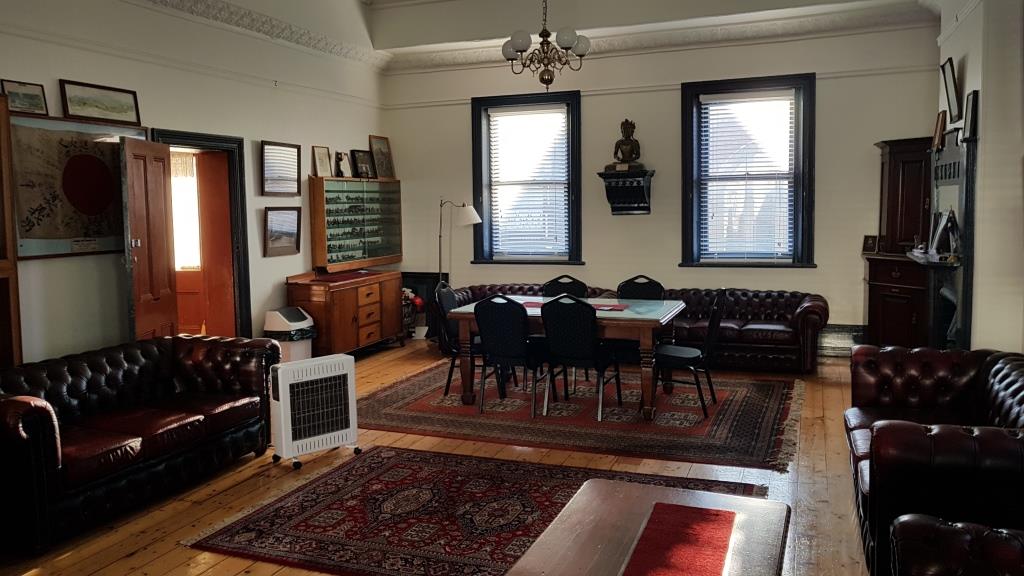 |
|||||||||||||||||||||||||||||||||||||||||||||||||
|
|
|||||||||||||||||||||||||||||||||||||||||||||||||
|
|
|||||||||||||||||||||||||||||||||||||||||||||||||
|
|
|||||||||||||||||||||||||||||||||||||||||||||||||
|
Catherine Fidock-James is the very enthusiastic manager of the Club and she would welcome you with open arms.
|
|||||||||||||||||||||||||||||||||||||||||||||||||
|
‘The views and opinions expressed in this article are those of the authors and do not necessarily reflect the official policy or position of the Royal Australian Air Force’ |
|||||||||||||||||||||||||||||||||||||||||||||||||
|
|
|||||||||||||||||||||||||||||||||||||||||||||||||
|
|
|||||||||||||||||||||||||||||||||||||||||||||||||
|
|

